IRF-3 (phospho Ser385) Polyclonal Antibody
- Catalog No.:YP0880
- Applications:WB;IHC;IF;ELISA
- Reactivity:Human;Rat;Mouse;
- Target:
- IRF-3
- Fields:
- >>Toll-like receptor signaling pathway;>>NOD-like receptor signaling pathway;>>RIG-I-like receptor signaling pathway;>>Cytosolic DNA-sensing pathway;>>Alcoholic liver disease;>>Shigellosis;>>Pertussis;>>Yersinia infection;>>Hepatitis C;>>Hepatitis B;>>Measles;>>Human cytomegalovirus infection;>>Influenza A;>>Human papillomavirus infection;>>Kaposi sarcoma-associated herpesvirus infection;>>Herpes simplex virus 1 infection;>>Epstein-Barr virus infection;>>Human immunodeficiency virus 1 infection;>>Coronavirus disease - COVID-19;>>Viral carcinogenesis;>>Lipid and atherosclerosis
- Gene Name:
- IRF3
- Protein Name:
- Interferon regulatory factor 3
- Human Gene Id:
- 3661
- Human Swiss Prot No:
- Q14653
- Mouse Swiss Prot No:
- P70671
- Immunogen:
- The antiserum was produced against synthesized peptide derived from human IRF-3 around the phosphorylation site of Ser385. AA range:351-400
- Specificity:
- Phospho-IRF-3 (S385) Polyclonal Antibody detects endogenous levels of IRF-3 protein only when phosphorylated at S385.
- Formulation:
- Liquid in PBS containing 50% glycerol, 0.5% BSA and 0.02% sodium azide.
- Source:
- Polyclonal, Rabbit,IgG
- Dilution:
- WB 1:500 - 1:2000. IHC 1:100 - 1:300. IF 1:200 - 1:1000. ELISA: 1:10000. Not yet tested in other applications.
- Purification:
- The antibody was affinity-purified from rabbit antiserum by affinity-chromatography using epitope-specific immunogen.
- Concentration:
- 1 mg/ml
- Storage Stability:
- -15°C to -25°C/1 year(Do not lower than -25°C)
- Other Name:
- IRF3;Interferon regulatory factor 3;IRF-3
- Observed Band(KD):
- 48-55kd
- Background:
- This gene encodes a member of the interferon regulatory transcription factor (IRF) family. The encoded protein is found in an inactive cytoplasmic form that upon serine/threonine phosphorylation forms a complex with CREBBP. This complex translocates to the nucleus and activates the transcription of interferons alpha and beta, as well as other interferon-induced genes. Alternatively spliced transcript variants encoding multiple isoforms have been observed for this gene. [provided by RefSeq, Nov 2011],
- Function:
- function:Mediates interferon-stimulated response element (ISRE) promoter activation. Functions as a molecular switch for antiviral activity. DsRNA generated during the course of an viral infection leads to IRF3 phosphorylation on the C-terminal serine/threonine cluster. This induces a conformational change, leading to its dimerization, nuclear localization and association with CREB binding protein (CREBBP) to form dsRNA-activated factor 1 (DRAF1), a complex which activates the transcription of genes under the control of ISRE. The complex binds to the IE and PRDIII regions on the IFN-alpha and IFN-beta promoters respectively. IRF-3 does not have any transcription activation domains.,PTM:Constitutively phosphorylated on many serines residues. C-terminal serine/threonine cluster is phosphorylated in response of induction by IKBKE and TBK1. Ser-385 and Ser-386 may be specifically phosphoryla
- Subcellular Location:
- Cytoplasm . Nucleus . Mitochondrion . Shuttles between cytoplasmic and nuclear compartments, with export being the prevailing effect (PubMed:10805757). When activated, IRF3 interaction with CREBBP prevents its export to the cytoplasm (PubMed:10805757). Recruited to mitochondria via TOMM70:HSP90AA1 upon Sendai virus infection (PubMed:25609812). .
- Expression:
- Expressed constitutively in a variety of tissues.
Hafnium oxide nanoparticles coated ATR inhibitor to enhance the radiotherapy and potentiate antitumor immune response CHEMICAL ENGINEERING JOURNAL Zhanjun Gu WB Mouse 4T1 cell
Manganese ion gradient liposomes modified by disulfide bond enhance cellular uptake and tumor immunity. Haiyang Hu WB Mouse B16F10 cell-xenograft,4T1 cell-xenograft
The RNA helicase DHX35 functions as a co-sensor for RIG-I-mediated innate immunity PLoS Pathogens Yuan Qiao WB Human 1:1000 human airway epithelial cell
- June 19-2018
- WESTERN IMMUNOBLOTTING PROTOCOL
- June 19-2018
- IMMUNOHISTOCHEMISTRY-PARAFFIN PROTOCOL
- June 19-2018
- IMMUNOFLUORESCENCE PROTOCOL
- September 08-2020
- FLOW-CYTOMEYRT-PROTOCOL
- May 20-2022
- Cell-Based ELISA│解您多样本WB检测之困扰
- July 13-2018
- CELL-BASED-ELISA-PROTOCOL-FOR-ACETYL-PROTEIN
- July 13-2018
- CELL-BASED-ELISA-PROTOCOL-FOR-PHOSPHO-PROTEIN
- July 13-2018
- Antibody-FAQs
- Products Images
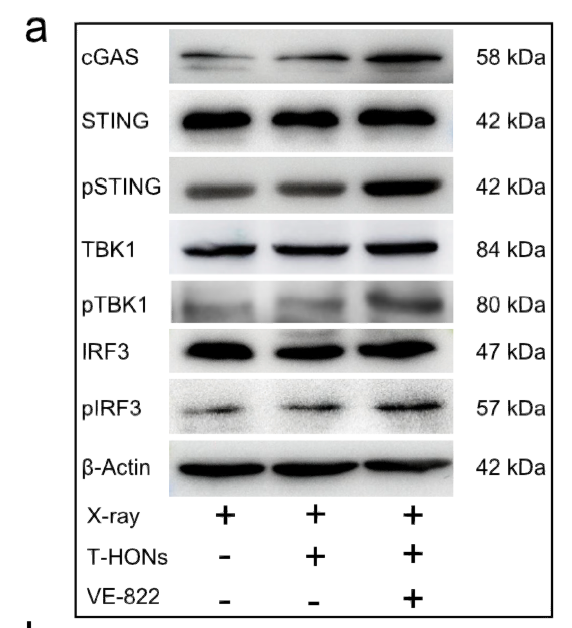
- Hafnium oxide nanoparticles coated ATR inhibitor to enhance the radiotherapy and potentiate antitumor immune response CHEMICAL ENGINEERING JOURNAL Zhanjun Gu WB Mouse 4T1 cell
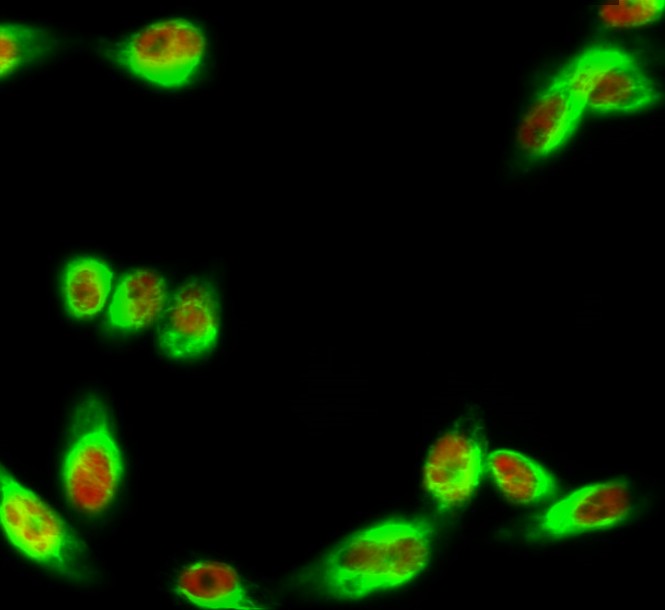
- Immunofluorescence analysis of Hela cell. 1,IRF-3 (phospho Ser385) Polyclonal Antibody(red) was diluted at 1:200(4° overnight). COX IV Monoclonal Antibody(6C8)(green) was diluted at 1:200(4° overnight). 2, Goat Anti Rabbit Alexa Fluor 594 Catalog:RS3611 was diluted at 1:1000(room temperature, 50min). Goat Anti Mouse Alexa Fluor 488 Catalog:RS3208 was diluted at 1:1000(room temperature, 50min).
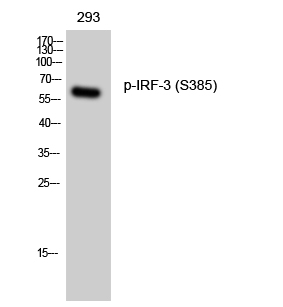
- Western Blot analysis of 293 cells using Phospho-IRF-3 (S385) Polyclonal Antibody
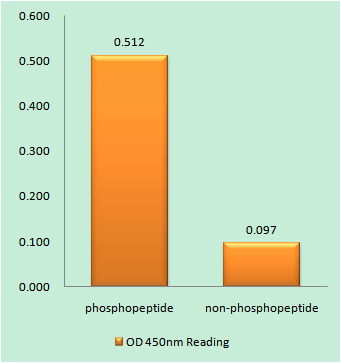
- Enzyme-Linked Immunosorbent Assay (Phospho-ELISA) for Immunogen Phosphopeptide (Phospho-left) and Non-Phosphopeptide (Phospho-right), using IRF-3 (Phospho-Ser385) Antibody
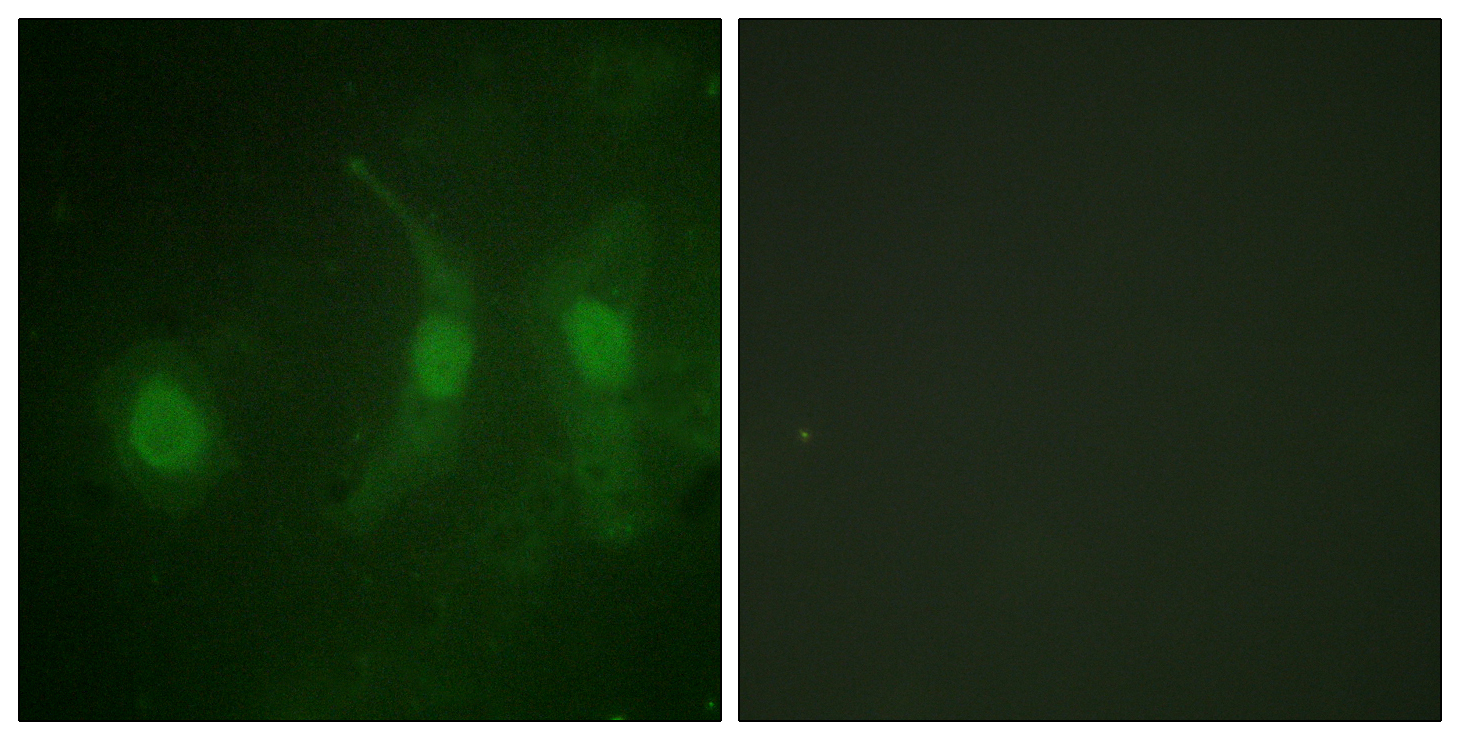
- Immunofluorescence analysis of HeLa cells, using IRF-3 (Phospho-Ser385) Antibody. The picture on the right is blocked with the phospho peptide.
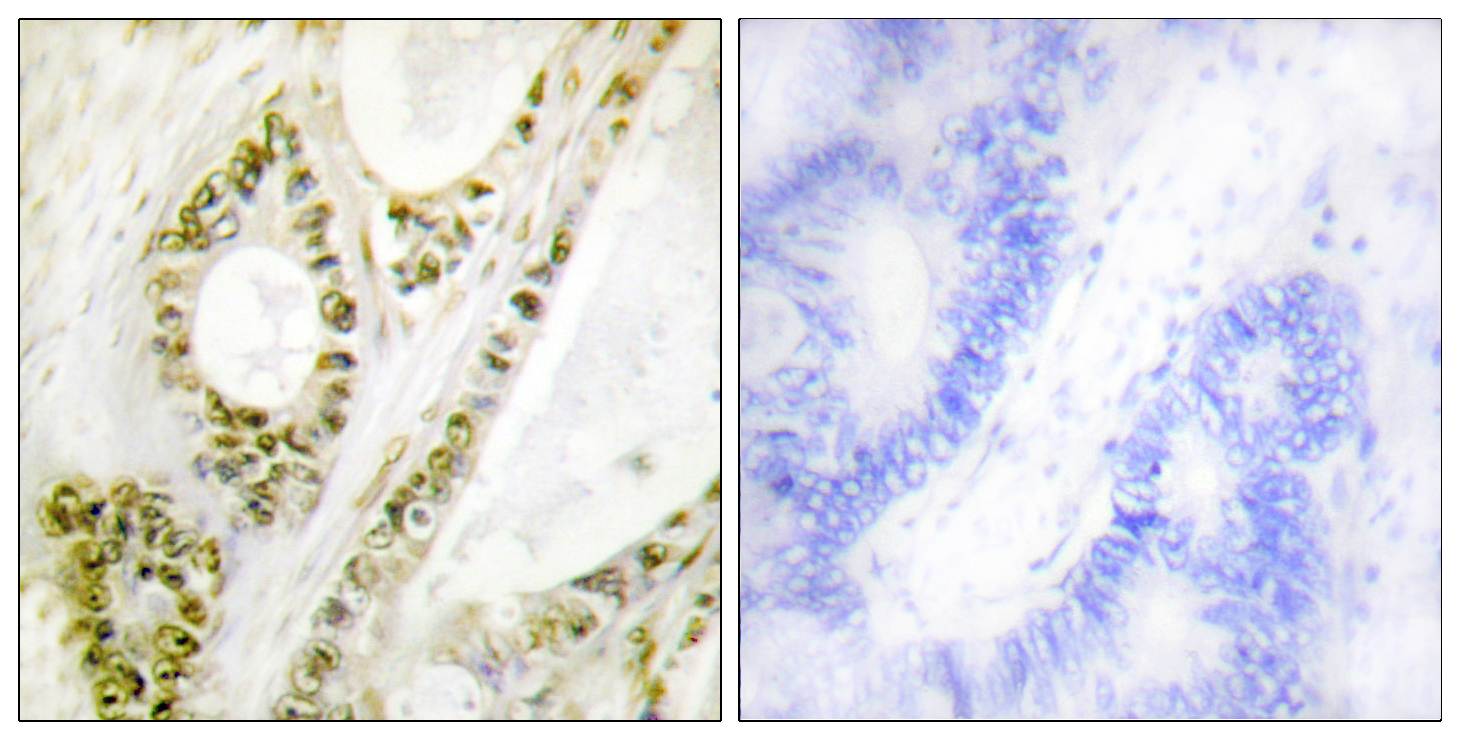
- Immunohistochemistry analysis of paraffin-embedded human colon carcinoma, using IRF-3 (Phospho-Ser385) Antibody. The picture on the right is blocked with the phospho peptide.
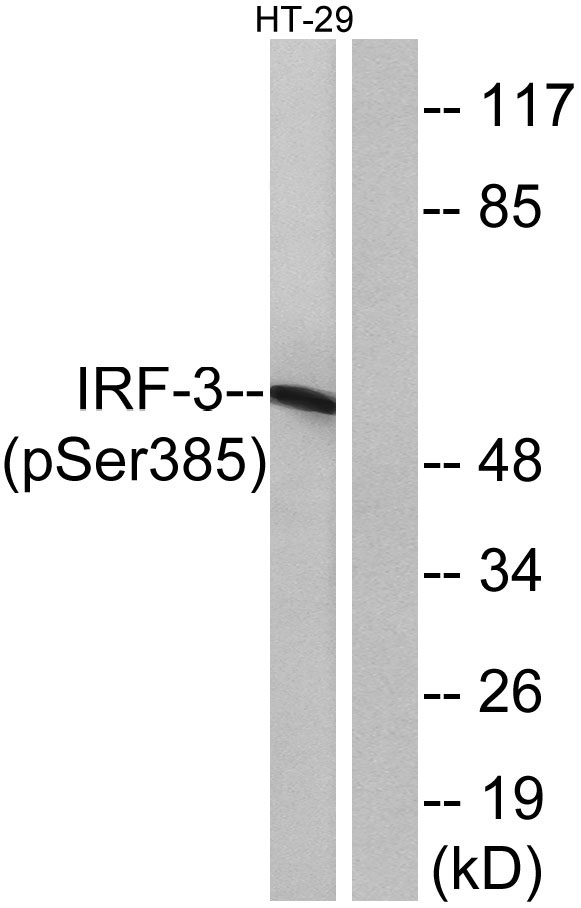
- Western blot analysis of lysates from HT29 cells treated with INSULIN 0.01U/ML 15', using IRF-3 (Phospho-Ser385) Antibody. The lane on the right is blocked with the phospho peptide.
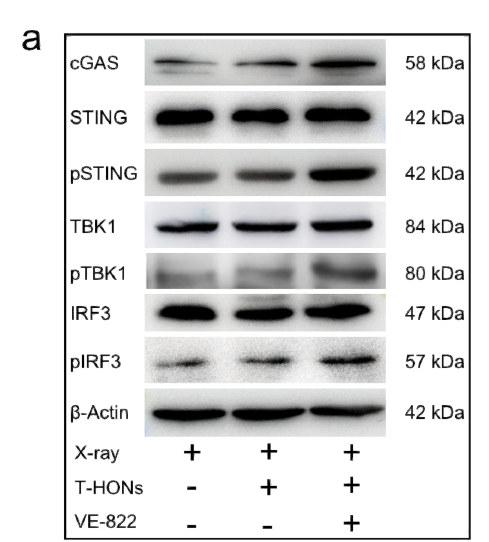
- Hafnium oxide nanoparticles coated ATR inhibitor to enhance the radiotherapy and potentiate antitumor immune response CHEMICAL ENGINEERING JOURNAL Zhanjun Gu WB Mouse 4T1 cell
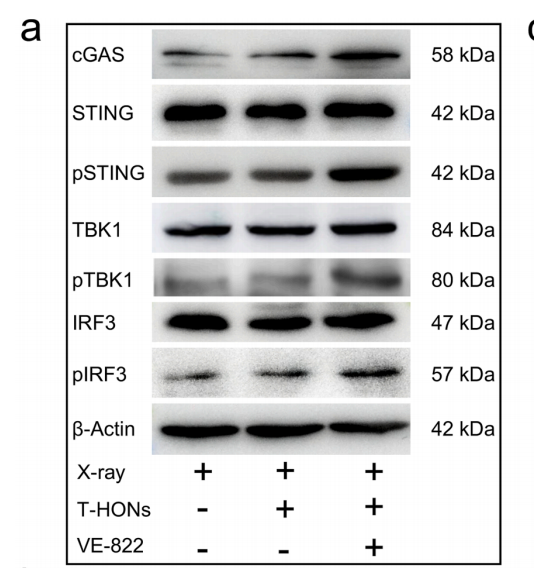
- Hafnium oxide nanoparticles coated ATR inhibitor to enhance the radiotherapy and potentiate antitumor immune response CHEMICAL ENGINEERING JOURNAL Zhanjun Gu WB Mouse 4T1 cell



